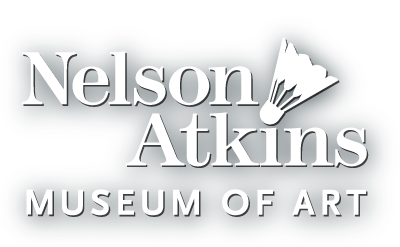Escutcheon and Ring Handle
CultureChinese
DateHan dynasty (206 B.C.E.-220 C.E.)
MediumChased, engraved and gilded bronze
DimensionsOverall: 18 × 9 inches (45.72 × 22.86 cm)
Credit LinePurchase: the Lillian M. Diveley Fund
Object number2000.9.1 A,B
On View
On viewGallery Location
- 231
Collections
Gallery LabelThis escutcheon, or protective shield, would originally have been attached to the door of a tomb or a palace. The dragon has bulging eyes, furry eyebrows, scaly skin and pointed, wolf-like ears. Below each eye, his claws grasp his upper jaw as if he is fighting with himself, and his bared fangs clench the ring handle. Such dragon escutcheons clearly possessed a powerful apotropaic force, defending the space within from intruders, whether humans or spirits.
J. J. Lally & Co.;
Purchased from J. J. Lally & Co. by The Nelson-Atkins Museum of Art, Kansas City, MO, 2000.
Orientations, Special issue for the Chinese art collection in the Nelson-Atkins Museum of Art, Vol. 39, no. 8 (November/December 2008), 77, fig. 12 (repro.).
Deborah Emont Scott, ed., The Nelson-Atkins Museum of Art: A Handbook of the Collection, 7th ed. (Kansas City, MO: Nelson-Atkins Museum of Art, 2008), 303, no. 67 (repro.).
Information about a particular artwork or image, including provenance information,
is based upon historic information and may not be currently accurate or complete.
Research on artwork and images is an ongoing process, and the information about a
particular artwork or image may not reflect the most current information available to the Museum.
If you notice a mistake or have additional information about a particular artwork or image,
please e-mail provenance@nelson-atkins.org.
Yuan dynasty (1279-1368) or early Ming dynasty (1368-1644)
F95-4














